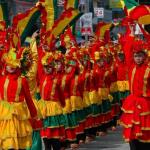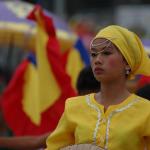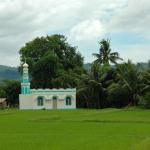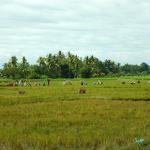The last Tribes of Mindanao, the Maguindanaons, people of the flood plains.
The island of Mindanao is former known as Gran Moluccas or Great Moluccas and named after the Maguindanaons who are part of the wider Moro ethnic group.
The name means people of the flood plains or derived from the two word maginged and danaw which means people of the marshy. In the early 15th century, Sharif Muhammad Kabungsuan, an Arab-Malay preacher from the royal house of Malacca, introduced the Islamic religion, customs and the Sultanate system of governance. He married into the local noble families of Mindanao and around 1515 founded the first sultanate of Mindanao, the sultanate of Maguindanao and Buayan. The indigenous population was quickly converted and the first mosque in the Philippines was built in the middle of the 14th century.
Bangsamoro or Moroland was originally home to the Muslim sultanates of Mindanao, these sultanates resisted Spanish colonial rule, and were therefore not fully integrated with the rest of the islands. The term Bangsamoro is derived from the Malay word bangsa, meaning nation or people, and the Spanish word Moro, from the older Spanish word for Moor, a term for Arabs or Muslims. Their ongoing struggle for self-determination and cultural identity is a struggle of generations. The Maguindanao are one of many groups of "lowland" Filipinos who arrived on the island of Mindanao during sequent waves of migration from the Southeast Asian mainland several thousand years ago. The region of Maguindanao became home to most of the country's Muslim or Moro populations, composed of many ethnic groups such as the Maranao and the Tausug, the Banguingui as well as collective groups of indigenous, non-Christian and non-Muslim tribes. Better known as the Lumad, a complex patchwork of indigenous groups. The Maguindanao, the largest group of Muslims on the Island of Mindanao, live in the most unappealing area, the marshy portion of the present site of Cotabato, their ancestral land is flooded many times a year by overflowing rivers.
The Maguindanao, a hardy clan, are inland, dwelling Muslims who cultivate rice as their basic food crop and survive on fishing and weaving fine mats and baskets. For centuries, they lived in relative peace with other tribal groups that inhabited the highlands of Cotabato; these grounds were used as a place of refuge and as a source of slavery. Attempts by the Maguindanao to subdue the mountain tribes of Cotabato did not succeed, but later on trading flourished between the different groups. As far back as the Spanish occupation, various Muslim groups of the Maguindanao tribes were already settled in regions that developed later into important towns such as Samal in Davao del Sur, Tagum in Davao del Norte and Mayo which is now Davao City. At present the Maguindanaons live along the coastal area of Southern Mindanao, as well as in the Cotabato Basin adjacent to the upper Allah Valley.
Most Maguindanao follow standard Islamic beliefs and practices, but the native Maguindanaons persevere to a form of folk Islam, their believe in spirits, sorcery and supernatural beings is still evident in their culture and ceremonies. The apo na palay, or grandfather of the rice, is a tribe member who conducts rituals and chants incantations over the rice fields at night to ensure a good harvest. During the month of Ramadan, all tribe members will participate in various ceremonies that are associated with fasting. Other ceremonies, such as those related with birth, marriage, and death, have both indigenous and Islamic beliefs and rituals.
The Maguindanao are traditionally a peace-loving, inland-dwelling tribe, the essence of the ancient Islamic faith and culture remains a great part of their daily life, a great contradiction however is their culture of dominant clan power that is deeply rooted within the Maguindanao tribes. Clan wars or blood feuds have long been embedded in the life in many parts of Maguindanao. these feuds, characterized by occasional outbursts of retaliatory violence are called rido, a term that originated from the Maranaos. The causes of rido are commonly offenses to honour, land disputes, crimes against women and offenses between families, kinship groups and communities.
Maguindanaons celebrate the Shariff Kabunsuan Festival, an extraordinary display of Muslim religion and culture. It is a colourful feast commemorating and celebrating the arrival of Shariff Kabunsuan via Rio Grande de Mindanao more than 500 years ago. For centuries Islam has brought peace and harmony to the people of the Maguindanao tribe, a tribe with a turbulent past, a vibrant present and uncertain future. Maintaining the unique Maguindanao culture while operating in the modern Mindanao way of life will be a huge challenge and a great opportunity to show the world the real and peaceful face of the Maguindanao tribe.
* * * * *
 ThingsAsian
ThingsAsian




















